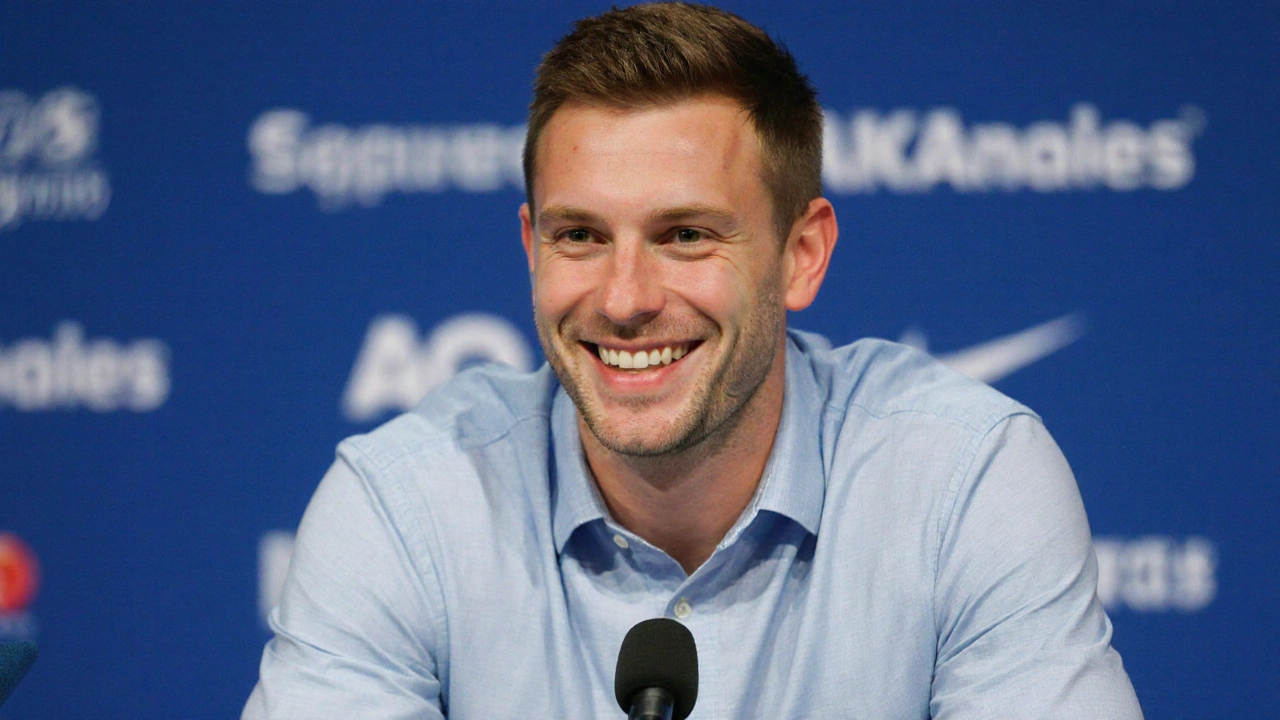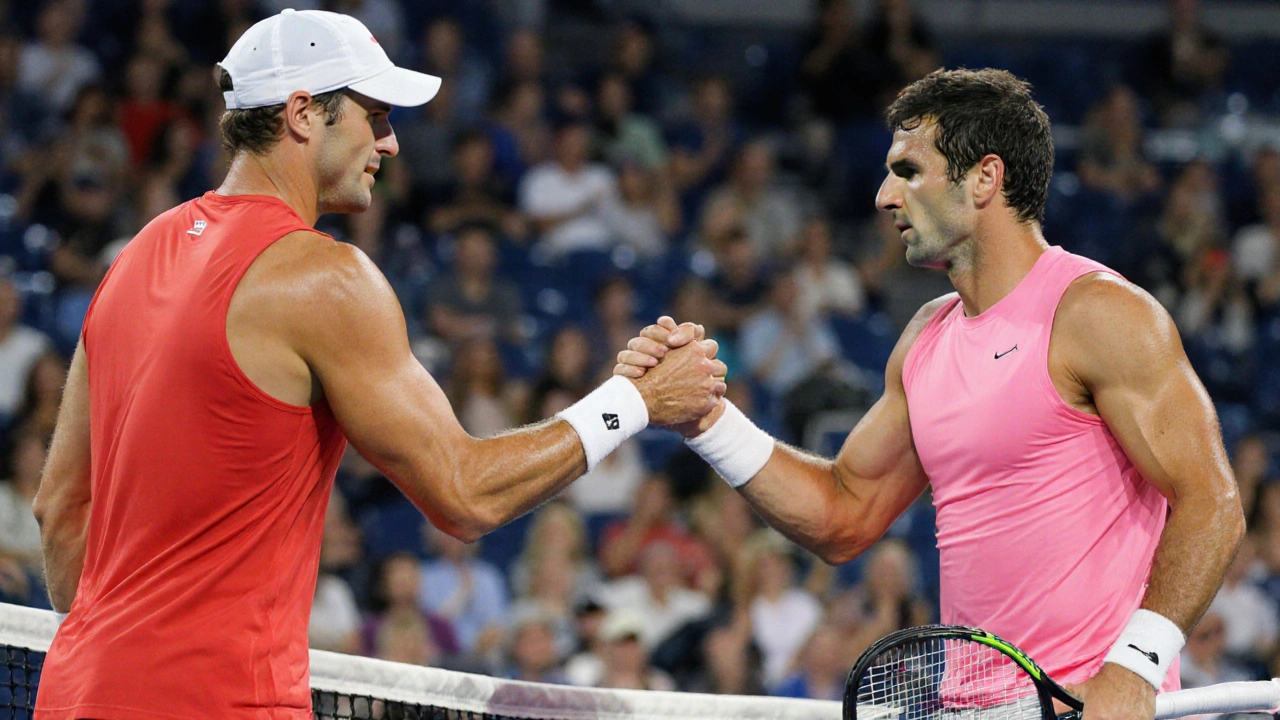26 Sep 2025
- 8 Comments
When Jannik Sinner walked off the court at Flushing Meadows with a 6-2, 3-6, 6-1, 6-4 defeat, the sting wasn’t just about the title slipping away – it was about the world No. 1 ranking handing over to a 22‑year‑old Carlos Alcaraz. In the post‑match press conference, the Italian’s voice cracked a little, but his message was crystal clear: the gap between them is real, and he’s ready to close it even if it means eating a few losses along the way.
Why Sinner is Betting on Long‑Term Gains
Weeks after the final, Sinner has been vocal about a “changing a lot” mindset. He’s not talking about a minor tweak to his serve; he’s hinting at a whole‑hearted overhaul. That kind of honesty is rare in a sport where confidence is currency. In a recent interview, he said, “If I have to drop a match now to figure out what works, I’ll do it. The goal is to beat Alcaraz consistently, not just once.”
That admission sparked a swirl of speculation among coaches, analysts and fans. What exactly might Sinner be altering? Below are the three main areas he’s hinted could see the biggest overhaul:
- Tactical Flexibility: Shifting from a baseline‑heavy game to mixing in more net approaches, drop shots and varied spin to disrupt Alcaraz’s rhythm.
- Physical Conditioning: Adding explosive sprint drills and endurance sessions to match Alcaraz’s relentless speed on both ends of the court.
- Mental Resilience: Working with a sports psychologist on clutch‑point scenarios, ensuring he can stay calm when the match is on the line.
Each of these changes carries a risk of short‑term dip in performance. A new serve motion can lead to double faults, extra net rushes might yield unforced errors, and heightened training loads can cause fatigue. Sinner is apparently okay with that trade‑off, viewing early setbacks as necessary growing pains.

What Changes Could Threaten Alcaraz’s Dominance
Alcaraz, fresh off his sixth Grand Slam, didn’t shy away from the conversation either. He told the media, “It’s the same thing I did after a big loss. You look at what didn’t work and you fix it.” His own evolution – adding more variety to his backhand and sharpening his serve placement – turned him from a perpetual runner‑up into a relentless champion.
If Sinner’s adjustments hit the sweet spot, they could force Alcaraz into a new kind of battle. Instead of the usual baseline duels, we might see longer rallies that test endurance or surprise drop‑shot exchanges that require split‑second decisions. That shift could also open tactical windows for Alcariz’s own team to counter‑adjust, setting the stage for an even more dynamic rivalry.
Meanwhile, Sinner’s upcoming schedule – including the China Open and a few ATP‑500 events – will act as a real‑time lab. Every match will reveal whether his new tools blend seamlessly or need more fine‑tuning. Observers will be watching his serve percentages, breakpoint conversion, and how often he ventures to the net.
One thing is clear: the next few months could produce a very different brand of tennis from what we saw in New York. Whether Sinner’s willingness to lose a few battles now leads to a lasting edge against Alcaraz remains to be seen, but the very fact he’s openly embracing that gamble makes the rivalry feel fresh, unpredictable, and absolutely worth the watch.


Satpal Singh
September 26, 2025I respect Sinner's transparent approach to improvement. He’s openly admitting that short‑term setbacks may be necessary for long‑term dominance. The focus on tactical flexibility and mental resilience shows a mature mindset. It’s also a reminder that even top athletes must evolve to stay ahead. In my view, this strategy could narrow the gap with Alcaraz if executed wisely.
Devendra Pandey
October 7, 2025Loss, in the grand theatre of sport, is often glorified as a stepping stone rather than a blemish. Jannik Sinner’s proclamation that he is willing to sacrifice victories resonates with an ancient Stoic sentiment: endure the present pain for a future triumph. By deliberately courting defeats, he attempts to dissect his own game, a method reminiscent of a craftsman testing each tool before the final masterpiece. The psychological burden of watching a rival ascend to world No. 1 can be a catalyst for profound self‑reflection. Sinner’s willingness to lose matches is not a surrender but an experiment in controlled adversity. He is, in effect, performing a series of calibrated failures, each designed to expose a weakness. This approach mirrors the concept of antifragility, where systems grow stronger when exposed to stressors. Moreover, his focus on adding net approaches and varied spin suggests a tactical diversification that could disrupt Alcaraz’s rhythm. The physical conditioning he plans, with explosive sprints, may close the speed gap that currently favors the Spaniard. Mental resilience, nurtured by a sports psychologist, could provide the composure needed during clutch points. Critics may argue that this gamble risks eroding confidence, causing a spiral of unforced errors. However, history is replete with athletes who embraced temporary decline to achieve lasting greatness. Consider how Michael Jordan briefly left basketball, only to return with renewed purpose. Or how Novak Djokovic reinvented his serve mid‑career, sparking a resurgence. Sinner’s strategy, therefore, should be judged not by the immediate loss tally but by the adaptive capacities he cultivates. If the upcoming China Open serves as a laboratory, each match will be an experiment, and each experiment will yield data. In time, this data could coalesce into a refined arsenal capable of challenging Alcaraz’s dominance.
manoj jadhav
October 18, 2025Wow!!! Sinner’s game plan is a fascinating puzzle, and I’m all in for watching it unfold!!! The blend of baseline power and sudden net rushes could really throw Alcaraz off his groove!!! Adding sprint drills sounds brutal, but the payoff might just be worth the sweat!!! Mental coaching, too-because even a titan needs a calm mind when the pressure builds!!! Let’s see how the tennis world reacts as these changes take shape!!!
saurav kumar
October 29, 2025Sinner’s willingness to experiment could reshape the rivalry.
Ashish Kumar
November 9, 2025It is absolutely astonishing how Sinner chooses to dance with defeat as if it were a partner in a twisted waltz. Such audacity is not merely a tackical decision, it is a moral proclamation that the quest for greatness outweighs the fear of temporary loss. Yet one must question whether this self‑inflicted suffering will not corrupt the purity of his craft, leading to chaotic unforced errors. The tennis elite will watch with bated breath as he navigates this perilous path, hoping his ambition does not devolve into hubristic folly.
Pinki Bhatia
November 20, 2025I can see how painful it must feel for Sinner to watch Alcaraz take the top spot, especially after such a close final. His determination to grow through loss shows a deep commitment to his sport and personal development. It’s encouraging to see a player prioritize long‑term progress over short‑term pride. Fans like us should support his journey, recognizing the courage it takes to embrace uncertainty.
NARESH KUMAR
December 1, 2025Everyone’s growth comes from stepping out of comfort zones 🌱. Sinner’s experiment is a great lesson-don’t fear setbacks, learn from them and keep moving forward 🚀.
Purna Chandra
December 12, 2025Honestly, the whole narrative around Sinner “strategically losing” feels like a carefully scripted drama orchestrated by the hidden powers that profit from perpetual suspense. The ATP might be engineering this rivalry to keep viewership numbers soaring, feeding the elite media machine that thrives on endless intrigue. While Sinner talks about tactical flexibility, one could argue he’s merely a pawn in a grand design that manipulates player trajectories for commercial gain. Still, if he manages to break free from these manufactured constraints, we might witness a genuine revolution on court-a rare moment of authentic brilliance amidst the manufactured chaos.